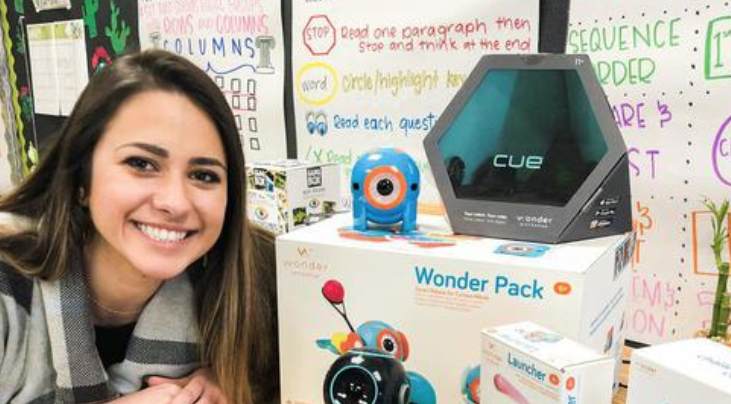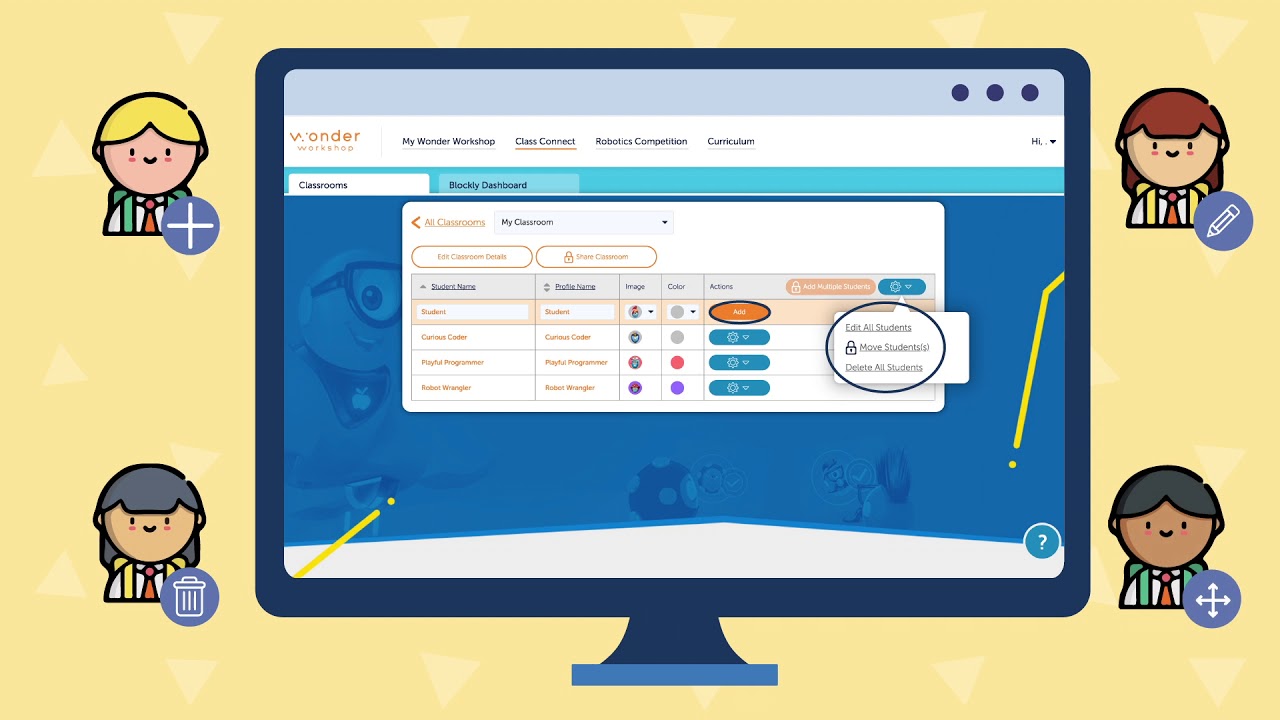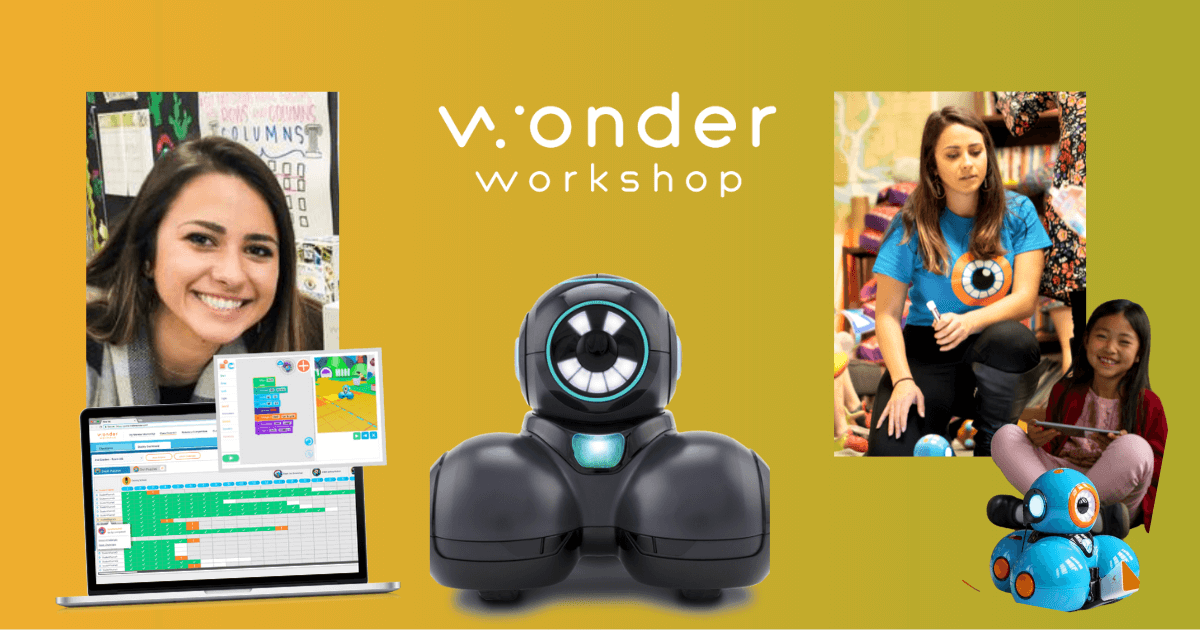Last week, we were fortunate to be able to sponsor one of the sessions of Wonder Workshop's Virtual Summit. We provided a raffle prize for the ‘Coding Activities for Elementary Students’ session led by Wonder Workshop ambassador, Jasmine Saab. Even without seeing all of the positive comments and words of praise that came in during the broadcast as well as after, we can tell you she did a fantastic job of educating, informing, and intriguing the audience while keeping things fun. Here are some of the highlights.
Jasmine is a huge fan of Wonder Workshop’s robots, particularly the Dash Robot, but she teaches all subjects. She has a bunch of the Dash and Cue Robots in her classroom and she’s learned a lot about teaching with them—as well as some of the other things that come with a wealth of experience. These include the best ways to charge, carry, clean, store, and empower students to collaborate with them.

She’s also found it very helpful to define student roles when they’re using the Dash or Cue and some of her favorites include assigning someone in a group to be the programmer, someone to be the set designer, and someone to document (these can certainly be adjusted to your own classroom needs or based on the number of students in the group). This adds both structure and organization to in-class coding and we’d agree with Jasmine that it is worthwhile.
"I think the sweet spot is really three to one. You really want a maximum of three students to one robot." - @JasmineSaab #wwvirtualsummit @wonderworkshop pic.twitter.com/BD4IsTkNel
— Eduporium (@Eduporium) April 15, 2020
In Jasmine’s opinion the sweet spot in terms of students-to-robot is three students to one robot. That’s what’s worked best for her, but it’s truly different in each classroom. Plenty of educators might find this true and, surely, others might go with a two-to-one ratio or maybe four-to-one. When you really believe that coding is a second language students have to learn, like Jasmine does, she’s always making sure she’s integrating the robotics in a meaningful way—one that covers coding, but also covers standards.
To Jasmine, it’s important to communicate that, while these robots are fun, they also help students learn a lot. She focuses on clear learning objectives in each lesson with the Dash or Cue and keeping everyone focused on big-picture concepts. Jasmine discussed some other things she’s learned as well, including determining concepts you want students to repeat, using rubrics, devoting a full day or two to completing a project, and saving the programming for last.
Jasmine also gave a very detailed example of how she “unpacks the standards” in her teaching. Standard 4.NBST.6, for example, requires students to be able to divide up to a 4-digit dividend by a 1-digit divisor using strategies based on place value, properties of operations, and the relationship between multiplication and division. She starts by breaking the requirements down, which involves finding the verbs (“divide”) and finding the nouns (“4-digit dividend” and “1-digit divisor”). She then indicates to students that they can divide a 4-digit number by a 1-digit number.
Through this process, Jasmine has found that unpacking the standards for her students helps increase their overall depth of knowledge, allows her to focus better on all levels of learning, and helps students drive their own instruction. It also provides for more transparency in the classroom, opportunities for variation in assessments, and greater amounts of student choice!

After that, Jasmine talked about the benefits of using Wonder Workshop’s Class Connect platform in the classroom. This platform allows teachers to create classes and profiles for each student in that class. They can then track student progress and access a whole lot of useful information for personalizing instruction.
Once connected to Class Connect students can also explore coding concepts and try coding in Blockly environments. They can learn computer science concepts, like loops, sequences, and events, all in this easy-to-access environment. Class Connect also provides opportunities to boost computational thinking skills and plenty of other computer science experiences. Teachers can upload projects, like Jasmine’s Snowman Lesson, browse Challenge Cards, and explore Wonder Workshop’s cross-curricular lesson library.
Once students get the hang of coding with the Dash, Jasmine is a big fan of the Wonder Workshop accessories. They add new dimensions to the Dash or Cue Robot and her students have created a lot of innovative projects with accessories like the Gripper, Xylophone, Blaster, and more! She even shared sample lessons with the audience, including those for math, social studies, ELA, and more!
Finally, Jasmine talked about the Wonder Robotics League and what it’s like to coach and gave a bit of a look into the virtual Dash Robot simulator they released towards the end of the school year. Of course, she finished up by answering some questions and showing off her amazing Dash Halloween costume. It was a great session and we know we echo the sentiments of everyone in saying that Jasmine did great! Also, the winner of our raffle prize was Imani Mehta from the KC Creators Club! Congratulations to Imani! Follow us on Twitter and Instagram to keep up with all things STEAM education and follow Wonder Workshop too!



